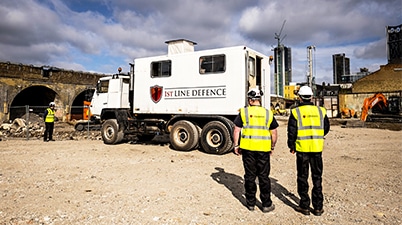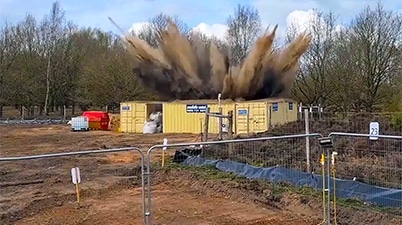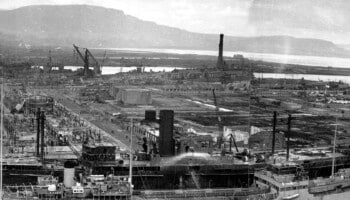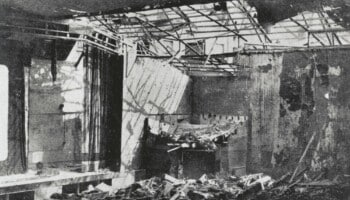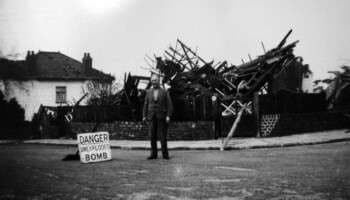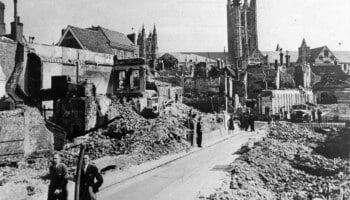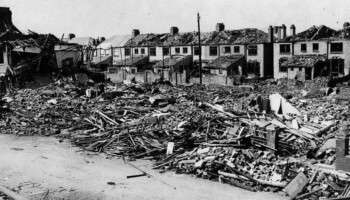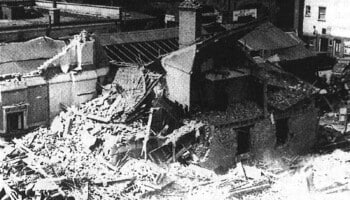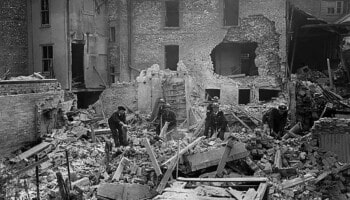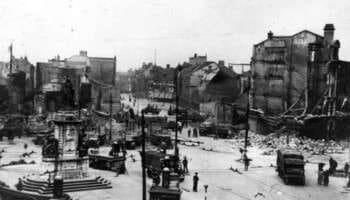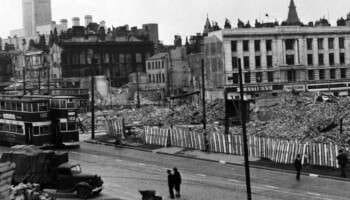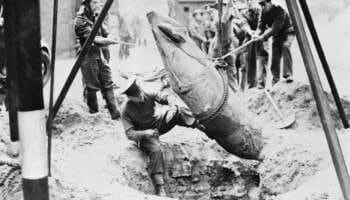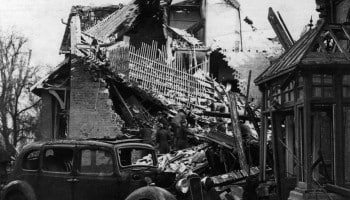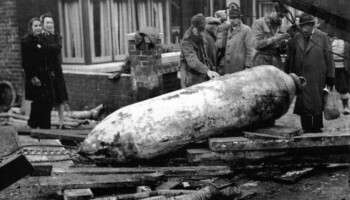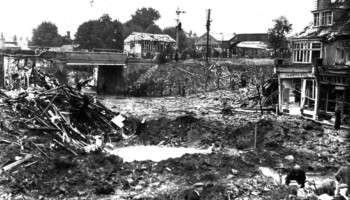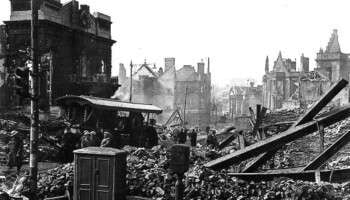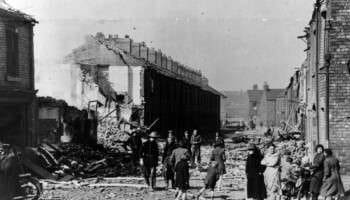Home » Resources » UXO City Guides »
UXO City Guide
Home Office Bombing Statistics for Great Yarmouth
Record of German Ordnance dropped on the County Borough of Great Yarmouth
High Explosive Bombs (All types)
910
Parachute Mines
9
Oil Bombs
1
Phosphorus Bombs
8
Fire Pots
10
Pilotless Aircraft (V-1)
0
Long-range Rocket Bombs (V-2)
0
Weapons Total
938
Area Acreage
3,598
Number of items per 1,000 acres
260.7
Why was Great Yarmouth targeted and bombed in WWII?
Great Yarmouth, located on the eastern coast of Britain, was an important military centre during WWII, housing numerous naval units, including mine-sweeping flotillas, that played a crucial role in keeping shipping lanes free of enemy mines1. Later, during the preparations for Operation Overlord (D-Day), Great Yarmouth was chosen to be a key embarkation point for British and Allied troops. As such, the town saw an influx of military personnel and equipment throughout this period, with the surrounding areas often being used for military training exercises.
During WWII, Great Yarmouth was one of the last significant places where the Luftwaffe could drop/jettison any remaining ordnance before returning to Norway/Europe – and indeed, would often be where bombs were dropped early, as bombers reached the coastline heading for targets inland. As during WWI, East Anglia proved an easy target for German bombing raids during WWII, due to its obvious location on the east coast2.
German air raids targeted Yarmouth for the first time in summer 1940. Most bombing raids on the town occurred in 1941 – some 800 high explosive (HE) bombs were dropped that year, with the loss of 109 lives. The extracts of bomb maps shown below give an indication of the density and amount of bombing that the town sustained.
Home Office Bombing Statistics for Great Yarmouth
Details recorded by official Home Office bombing statistics, indicates the quantity and type of bombs that fell on the County Borough of Great Yarmouth during WWII (excluding incendiary bombs). A total of 938 recorded bombs fell in total, with an average of 260.7 items of ordnance recorded per 1,000 acres. This was a very high density of bombing over a small area.
A significant number of unexploded bombs were reported in Great Yarmouth during the war – some of very large calibre, presumably designated for the Port/naval facilities. Some examples of UXBs recovered in the town are shown below.
Major bomb damage in Great Yarmouth
Few areas of the town were left unaffected by the bombing. Some 1,427 houses and 172 other premises were so badly damaged that they had to be demolished. The image below gives an example of the devastation that some areas of the town experienced.
One particularly unfortunate bombing incident in May 1943 resulted in reportedly the biggest single loss of life of British servicewomen during WWII. A Focke-Wulf 190 dropped a bomb on Sefton House, where 26 members of the Auxiliary Territorial Service were being accommodated (a photograph of the memorial plaque commemorating the incident is shown below).
WWI Bombing and Naval Attack on Great Yarmouth
Great Yarmouth suffered its first aerial bombardment during WWI, as Zeppelin L3 attacked the town on the 19th of January, 1915 and 2nd/3rd September 19163. It was one of the first places in England to sustain bombing during WWI. It is understood that two Zeppelins were dispatched to bomb Humberside and the docks, but neither could not locate it in the dark – one went on to King’s Lynn, and the other to Yarmouth. Ten bombs were dropped over the town, with two residents being killed in St Peter’s Plain.
It was later bombarded during an attack on Yarmouth and Lowestoft by the German Navy on the 24th of April, 19164. A battlecruiser squadron with accompanying destroyers and cruisers aimed to entice defending ships to sail from the ports, which could then be easily picked off by the full High Seas Fleet that was stationed at sea ready to intervene. The result was militarily inconclusive, as the British forces nearby were too small to challenge the attack, and the German ships withdrew before the British Grand Fleet could arrive. Lowestoft took the brunt of the attack, with shelling lasting for some 30 minutes.
Great Yarmouth was shelled for only a few minutes, with some damage sustained to naval infrastructure. After the 1916 raid, East Anglia’s defences were strengthened, with pillboxes built along the coast, and batteries of field guns positioned at Caister, Corton, and Pakefield. To protect the approach to Great Yarmouth harbour, a naval gun was installed on Gorleston cliffs5.
Can UXO still pose a risk to construction projects in Great Yarmouth?
The primary potential risk from UXO in Great Yarmouth is from items of German air-delivered ordnance that failed to function as designed.
Approximately 10% of munitions deployed during WWII failed to detonate, and whilst authorities did search for related items, not all were encountered during the immediate post-war period.
This is evidenced by the regular discoveries of UXO across the UK – not just in Great Yarmouth. Nevertheless, in recent years numerous items of UXO have been found in Great Yarmouth – most notably the unplanned detonation of a 250kg HE along the River Yare by Southtown Road.
I am about to start a project in Great Yarmouth, what should I do?
Developers and ground workers should consider this potential before intrusive works are planned, through either a Preliminary UXO Risk Assessment or Detailed UXO Risk Assessment. This is the first stage in our UXO risk mitigation strategy and should be undertaken as early in a project lifecycle as possible in accordance with CIRIA C681 guidelines.
It is important that where a viable risk is identified, it is effectively and appropriately mitigated to reduce the risk to as low as reasonably practicable (ALARP). However, it is equally important that UXO risk mitigation measures are not implemented when they are not needed.
While there is certainly potential to encounter UXO during construction projects in Great Yarmouth, it does not mean that UXO will pose a risk to all projects. Just because a site is located in Great Yarmouth does not mean there is automatically a ‘high’ risk of encountering UXO. It really does depend on the specific location of the site being developed.
A well-researched UXO Risk Assessment will take into account location specific factors – was the actual site footprint affected by bombing, what damage was sustained, what was the site used for, how much would it have been accessed, what were the ground conditions present etc.
It should also consider what has happened post-war – how much development has occurred, to what depths have excavations taken place and so on. This will allow an assessment of the likelihood that UXO could have fallen on site, gone unnoticed and potentially still remain in situ.
Sources
1Michael Evans, East Anglia at War, Bretwalda Books Ltd, 2015.
2Robert Massie, Castles of Steel: Britain, Germany and the Winning of the Great War at Sea, Ballantine Books, 2003.
3https://www.iancastlezeppelin.co.uk/d-to-g
4Robert Massie, Castles of Steel: Britain, Germany and the Winning of the Great War at Sea, Ballantine Books, 2003.
5https://roadstothegreatwar-ww1.blogspot.com/
Recent UXO discoveries in Great Yarmouth
Since the war, many items of UXO have been discovered across multiple cities within the UK, with Great Yarmouth no exception. See the news articles below about UXO incidents and discoveries from national and local press in Great Yarmouth.
1st Line Defence keep up-to-date with relevant and noteworthy UXO-related news stories reported across the UK, and you can browse through these articles using the buttons below.
Get UXO risk mitigation services from a partner you can trust
UXO City Guides
Got a project in Great Yarmouth? Need advice but not sure where to start?
If you need general advice about UXO risk mitigation in Great Yarmouth, contact us and we will be happy to help.
Contact Us
* indicates required fields

